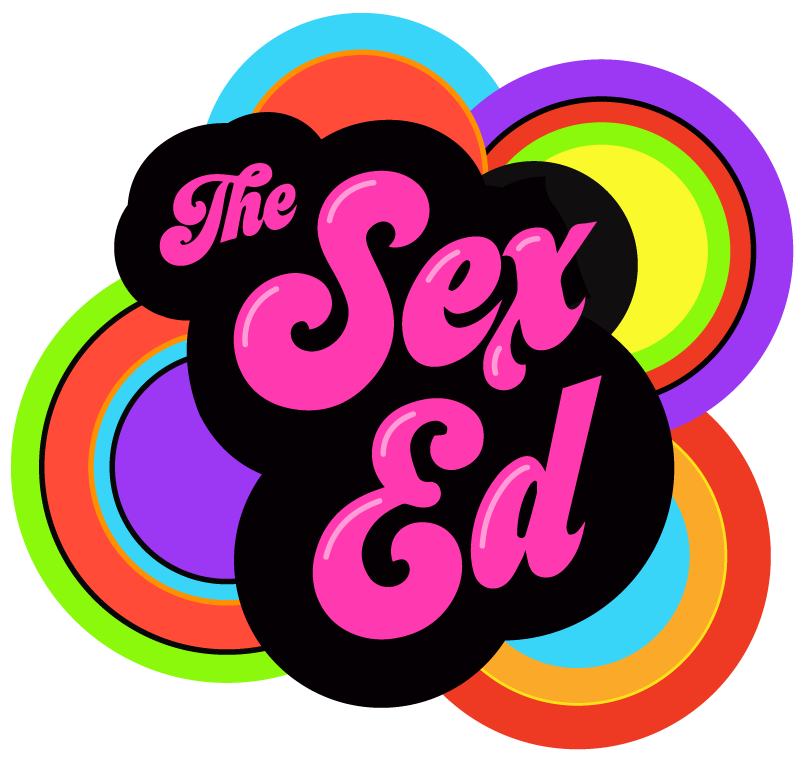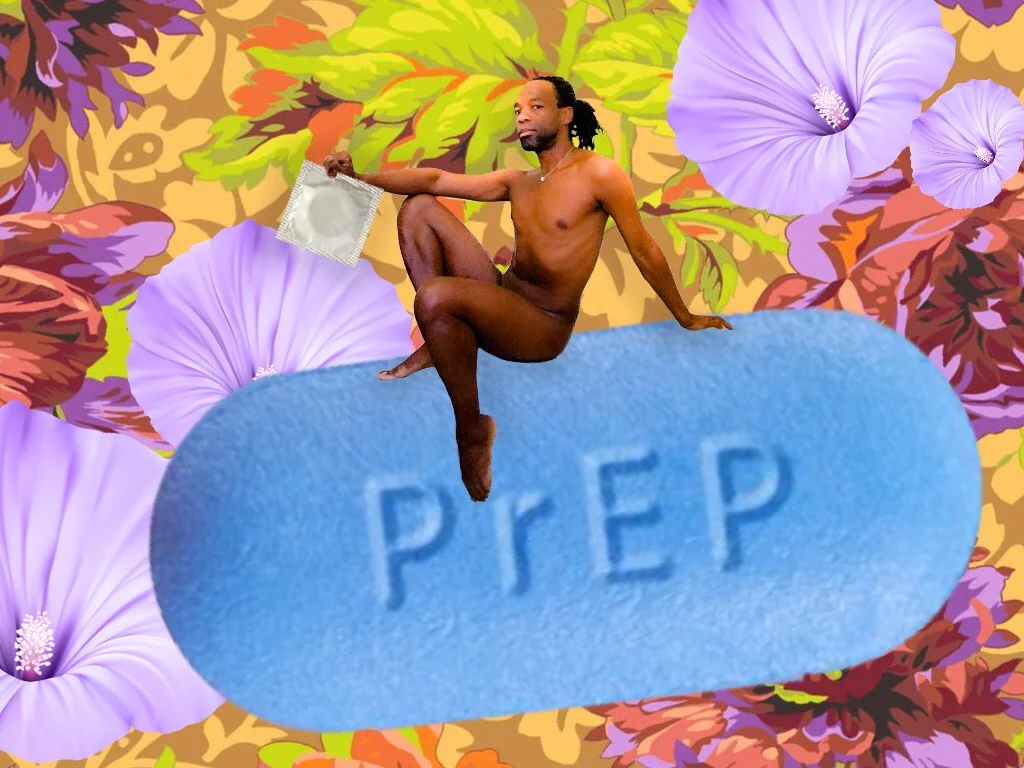The Barriers That Bind
AUTHOR: KIBWE CHASE-MARSHALL
For some gay men, the prospect of “safe sex” without condoms remains a complex (if not bitter) pill to swallow.
In the fall of 1997, I left a rather sleepy and suburban enclave of an otherwise urban city (Washington, D.C.) for the insomniac’s pace of the ultimate metropolis, New York City. I was attempting to leave behind Rave culture’s candy-colored, synthetic trappings in favor of embracing the paired down—but luxed up—sensibilities that had centered in fashion’s dialogue du jour, alta-minimalism. My goal was to relinquish the platform sneakers and metallic mini-backpacks for metropolitan collegiate sleek leather totes and fluid flat-front slacks. As a gay black man approaching my 20s, there was absolutely no way to leave behind the sobering realities surrounding what was at the time deemed “the AIDS epidemic.”
A quintessential 90’s teen, I came of age within an era defined by gangsta rap, grunge, and strict sexual doctrines of “no glove, no love” drawing a stark line in the sand between “risky behavior” and “safe sex.” This boundary, or “barrier” as it would be, has remained solidified by the sexual omnipresence of thin latex walls for my entire adult life.
Condoms utilized outside of the context of heterosexual intercourse aren’t about contraception. In theory, they are primarily about disease prevention or transmission prevention. Increasingly, I believe that this reality may have done quite the number on the minds of many Gay men of my era; or at least the mind of this Gay man. For us, sex operated essentially upon a 50/50-Russian roulette premise. When your lover has the potential to expose you to an incurable, (back then) barely treatable virus—or you have the potential to expose them—it makes for tentative bedfellows. Like kissing with one eye open, disbelief is far from suspended.
In a bathhouse in Jackson Heights, Queens, at age 20, I lost the “top” half of my virginity. Edgar went from frigid conversational detachment to euphoric sexual presence at the drop of a condom wrapper. The latex barrier gave him emotional permission to feel without fear of feeling too much, because technically and ultimately all one was feeling was the barrier itself.
Two years later over a summer weekend visiting family back home in D.C., I lost the “bottom” half of my virginity in a modestly furnished, Rock Creek Park-adjacent apartment with Gerard, who fancied himself a sexual maestro, fetishizing every element of intercourse—including condom use—as evidenced by bedside platter of Trojans, Magnums, and novelty flavored variations that he had so meticulously curated.
The early ‘aughts found me living in a ground floor Murray Hill studio and dating Terry, a makeup artist and aging trophy boy who had tested positive eight years previously and managed to remain healthy despite his then decision to forgo drug treatments. He was a feast for the eyes but our polar HIV statuses curtailed me from more fully indulging my appetite—even a barrier didn’t feel sufficient. Dry humping did though.
Over the years I realized that the men with whom I experienced the most emotional intimacy remained sexually at arm's length from me, and those with whom a sexual connection could be experienced were permitting those moments at the expense of any further emotional availability.
The Gay elders chalked it all up to the way AIDS, and the pleasure-prohibitive condoms it warranted, had funked up the game indefinitely, forever rendering the storied coital hedonism of the 70’s —an Eden to which we young bucks could never return. They spoke of a time and place in which sex without consequence functioned to draw a marginalized community closer together; a context in which each fuck restoratively took back some of the agency that effective 2nd-class citizenship insisted upon seizing.
But that was then and this was now...until now became today. Today my generation of Gay men (and those that follow) must navigate the cultural back-to-the-future prescription of pre-exposure prophylaxis, otherwise known as PrEP. Approved for distribution in 2012 and hailed as a miracle, PrEP is a drug therapy in which a once-a-day pill is taken orally reducing the chances of HIV contraction by more than 90%. In theory, reducing the risk of contracting HIV this drastically should be like keying the ignition of a time machine set to travel back to summers of love long gone by. So what’s the catch?
As with all things American, pharmaceutical, and health insurance related, PrEP can come with a hefty price tag, depending on how things shake out for each individual. In my case, after all was said and done, it would require a $200/month indefinite financial commitment at which my gig-economy salary scoffed.
As the digital era has chaperoned in its wild child, mobile technology, sex between men-who-fuck-men has grown increasingly (and numbingly) transactional. Up until PrEP, for better or way worse, it often felt like the threat of seroconversion—the medical industry term for testing positive for HIV—was the last reality pumping the brakes on a rapidly accelerating, hook-up app fueled, runaway train.
The “New Testament” era catalyzed by PrEP’s advent has so upended the various sexual ideologies most firmly etched into my psyche that I almost can’t locate up from down within these new bizarro world frameworks. Taking “exchange of bodily fluids” off the ban-list has inverted the entire sexual playing field. “Raw” sex was previously deemed out-of-bounds; those who risked seroconversion to partake in it were labeled “bug-chasers.” Now, after completing a seven-day cycle of PrEP, one can conceivably explore the pleasures of bare sex over the course of a summer on Fire Island, a weekend getaway to Atlanta, or a spring break jaunt to Thailand.
Couples who have—despite their commitment to monogamy—previously opted to use condoms in order to respect the realities and risks associated with potential infidelity, can now affirm their closeness via partaking in the enjoyment of a long-forbidden fruit nectar. How sweet it is...in theory.
I’ve been left liminally biding time in this new era’s foyer as a result of the my “Big 3”:
my instincts can’t help but wait for the proverbial other shoe to drop;
the pharmaceutical trust fall of PrEP exceeds my capacity to de-program 3 decades of “wrap-it-up” culturing; and
I’m not sure my mind and body instinctively even want to forgo barrier methods at this point; have I grown to enjoy a certain pleasure in the prophylactic?
As a Black Gay man coming of age in an era defined by AIDS ravaging the intersectional communities from which I had gleaned my identity, my HIV negative status bolstered my belief in my ability to defy the grim statistics society enjoyed casting upon me. I had learned to stake much of my own belief in my potential upward mobility in my commitment to maintaining disease-free status.
It wasn’t until a close friend tested positive (incidentally a millisecond prior to PrEP’s availability) that I became keenly aware of my investment in an “us” and “them” divide; the negatives vs. the positives—the “healthy” vs. the “unhealthy.”
It is a divide that I and many other Gay men strictly enforced, but time has revealed, to be porous, if not nonexistent. I’ve grown to understand, acknowledge and champion that HIV positive individuals adhering fastidiously to their medication protocols often realize undetectable, non-transmittable viral loads. I’ve observed that HIV negative-identified individuals (especially those on PrEP) may still engage in a host of sexual activities that render them at risk for contracting STDs less life-threatening than HIV but still compromising of their health.
Health has been a consistent in my life with which I’ve been blessed and never taken for granted. Something about its sustainability being incumbent on a one-a-day pill (either PrEP if I remain HIV negative, or antiretroviral meds if I became HIV positive) doesn’t sit well with me. So I continue to use condoms, despite the fact that doing so increasingly sidelines me sexually.
PrEP prescriptions (and the ability to forgo condoms) are not only becoming synonymous with perceived health, but also mainstream Gay belonging. These days I choose to connect sexually with those men still open to “Old Testament,” barriered activity, while embracing of “New Testament”-informed ideology. It’s an alignment that isn’t easily conveyed on hook-up apps like Grindr, but one that nonetheless defines a sexual subset. Not quite as catchy as “no glove, no love,” more of us emerge to define the boundaries of our own sexual activity—no longer stigmatizing those who elect for other options—declaring “I use condoms without judgment of those who don’t.”

